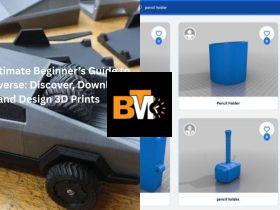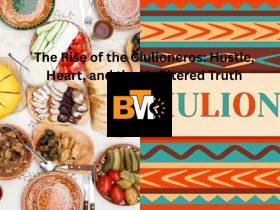Understanding Custom Packaging
Custom packaging refers to the process of designing packaging solutions specifically tailored to fit a brand’s identity, product dimensions, and customer expectations. Unlike standard packaging, which is often generic and mass-produced, custom packaging is made with precise consideration for how a product will be presented, protected, and perceived by the customer. It includes the choice of material, shape, color, design, branding elements, and overall aesthetic appeal.
The primary purpose of custom packaging is to enhance the customer experience while also ensuring that the product arrives safely. Whether it’s a luxurious unboxing moment or a sustainable kraft box with a company logo, every detail is planned to resonate with the target audience. Custom packaging doesn’t just hold a product; it communicates a message about the brand’s quality, values, and attention to detail.
Why Brands Choose Custom Packaging
One of the main reasons businesses opt for custom packaging is to create a memorable first impression. The packaging is often the first physical touchpoint a customer has with a product, especially in the e-commerce world. A well-crafted box with high-quality printing and custom dimensions shows that the brand cares about presentation and professionalism.
Moreover, custom packaging enhances brand recognition. Using consistent logos, colors, and typography across packaging helps build a strong brand identity. When customers receive a product that’s beautifully packaged, they’re more likely to remember the brand and share their experience on social media, which increases organic exposure.
Custom packaging also allows companies to add functional elements like inserts, partitions, handles, or tamper-evident seals. These features improve the overall user experience while adding protection during transit. From a marketing perspective, a customized box can act as a mini billboard that communicates value, builds trust, and fosters customer loyalty.
What Are Printed Boxes?
Printed boxes are packaging solutions that feature printed graphics, logos, texts, patterns, or artwork directly on the box material. They are often created using digital, offset, flexographic, or screen printing techniques, depending on the box type, design complexity, and budget.
Printed boxes serve both aesthetic and informational purposes. They enhance the visual appeal of the product while conveying necessary details such as product names, usage instructions, barcodes, QR codes, or compliance marks. With printed packaging, businesses can differentiate themselves from competitors and tell their brand story effectively through visual elements.
There are several types of printed boxes used in different industries. These include corrugated printed boxes for shipping, rigid printed boxes for luxury products, folding cartons for retail display, and custom mailer boxes for subscriptions or e-commerce deliveries. Each box type can be customized with full-color prints, spot UV finishes, embossing, or metallic foils, depending on the branding strategy.
Benefits of Custom Printed Packaging
Combining customization with high-quality printing offers several strategic advantages. First, it boosts brand visibility and recall. When customers see a beautifully printed box with distinctive graphics, they immediately recognize the brand. This visual consistency helps build a strong emotional connection with customers.
Second, printed custom boxes increase perceived product value. Well-designed packaging makes even simple items feel premium. This is especially important for brands operating in competitive markets where presentation plays a key role in consumer decision-making.
Third, custom printed boxes provide an opportunity to communicate brand values. Whether a brand emphasizes sustainability, minimalism, luxury, or playfulness, the packaging can reflect that identity. For instance, a company promoting eco-friendliness might use soy-based inks on recycled kraft boxes with green-themed designs.
Lastly, printed packaging adds professionalism and trust. In today’s online shopping era, receiving a product in a plain, generic box can feel underwhelming or even suspicious. On the other hand, receiving a product in a well-designed printed box builds confidence and reassures the buyer of the brand’s legitimacy.
Types of Materials Used in Custom Packaging
The choice of material is a crucial part of custom packaging. Common materials include corrugated cardboard, folding carton board, rigid chipboard, and kraft paper. Each type serves a specific function and is chosen based on product weight, durability needs, printing requirements, and budget.
Corrugated cardboard is widely used for shipping boxes due to its strength and shock-absorbing layers. Folding cartons are ideal for retail packaging, such as cereal boxes, cosmetic boxes, or pharmaceutical packs. Rigid chipboard is used for premium packaging like gift boxes, electronics, or luxury fashion items. Kraft paper is preferred for eco-conscious brands due to its natural appearance and biodegradable nature.
Each material can be printed using various techniques. Digital printing is suitable for short runs with complex designs. Offset printing is best for high-volume orders with consistent quality. Flexographic printing is cost-effective for simple designs on corrugated boxes. Screen printing allows bold and vibrant colors but is typically used for limited editions or artistic packaging.
Custom Packaging Design Elements
Design plays a central role in how custom packaging is perceived. Key elements include color schemes, typography, logo placement, imagery, and layout structure. A strong packaging design aligns with the brand’s visual identity and appeals directly to the target demographic.
Color psychology is important in packaging. For example, blue evokes trust, green suggests eco-friendliness, red signals excitement, and black conveys luxury. Typography must be readable and consistent with brand aesthetics. Imagery should be high resolution and relevant to the product or lifestyle it promotes.
Another vital component is structural design. The box style should not only look good but also function well. Popular styles include tuck-end boxes, mailer boxes, two-piece rigid boxes, and gable boxes. Each style serves different purposes based on the unboxing experience, product shape, and shipment method.
Finishing touches like matte or gloss lamination, foil stamping, spot UV, embossing, or soft-touch coatings enhance the tactile and visual feel of the box. These premium finishes elevate the customer’s experience and can make a product feel significantly more high-end.
Environmental Impact and Sustainable Options
In today’s eco-conscious market, many brands are turning to sustainable custom packaging. This includes using recyclable materials, biodegradable inks, minimal packaging designs, and eliminating plastic components. Consumers are more likely to support brands that demonstrate responsibility toward the environment.
Sustainable packaging doesn’t mean compromising on style. Recycled kraft boxes with modern prints can look just as appealing as glossy alternatives. Brands can also add messaging to inform customers about how to dispose of or reuse the packaging, reinforcing their commitment to sustainability.
Choosing local suppliers, minimizing packaging waste, and using soy or water-based inks are other ways to reduce the environmental impact. As green practices become mainstream, companies that embrace eco-packaging gain a competitive advantage in terms of reputation and customer loyalty.
Industries That Benefit from Custom Packaging
Custom packaging and printed boxes are used across a wide range of industries. In the cosmetics sector, elegant printed boxes convey beauty and luxury. In food and beverage, custom boxes provide tamper-evident packaging with appetizing visuals. In electronics, protective custom inserts ensure product safety, while branding builds trust.
E-commerce businesses benefit the most from personalized packaging. Since online sellers don’t have physical stores, the delivery package becomes their brand ambassador. Subscription boxes, for instance, rely heavily on attractive custom mailers to excite customers every month.
Retailers use shelf-ready custom boxes to stand out in crowded store aisles. Event planners use printed packaging for corporate gifts or promotional items. Pharmaceutical companies use custom printed cartons to provide critical dosage information clearly. Virtually every industry that sells or ships physical products can gain from custom packaging solutions.
How to Get Started with Custom Packaging
The first step in creating custom packaging is identifying the product’s specific needs. This includes size, weight, fragility, shelf life, and how it will be shipped or displayed. Next, defining the brand’s tone and target audience helps in choosing design elements that resonate.
Working with an experienced packaging supplier is essential. Most companies offer structural design prototypes, digital mockups, and material samples before final production. Brands should consider cost, lead time, print quality, and environmental practices when selecting a packaging partner.
It’s also important to test packaging before the full rollout. Sending out a few samples can help evaluate customer feedback and ensure the packaging meets performance expectations. Once finalized, businesses can place bulk orders with consistent branding across all product lines.
Conclusion
Custom packaging and printed boxes are powerful tools for modern businesses aiming to differentiate themselves in a saturated market. More than just containers, they play a key role in brand storytelling, customer satisfaction, product protection, and environmental responsibility. Investing in customized, well-designed packaging not only elevates the unboxing experience but also builds lasting connections with customers. For any brand looking to make an impact, custom packaging is no longer optional—it’s essential.







Leave a Reply